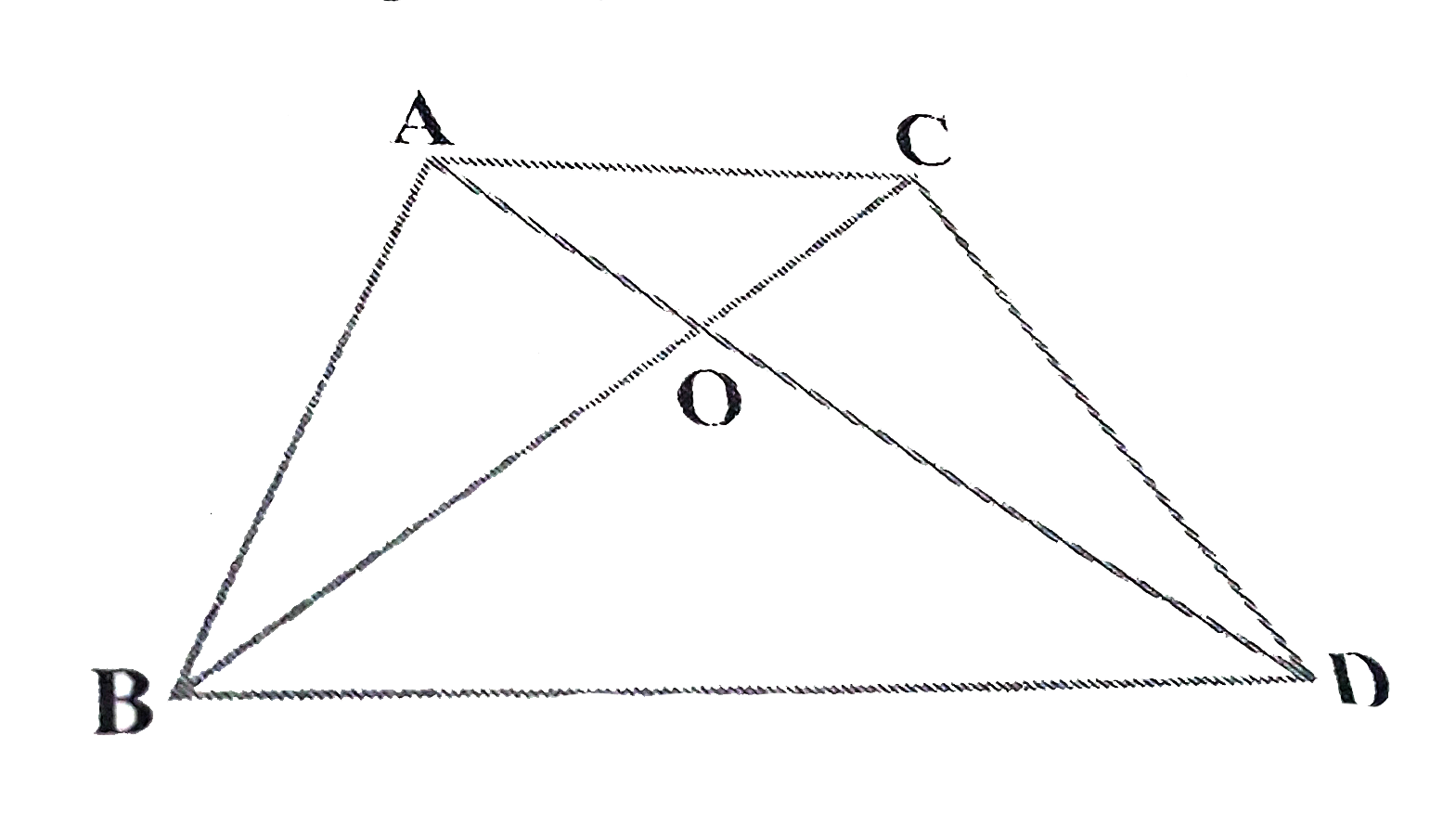In Figure, △ABC and △DBC are on the same base BC . If AD and BC intersect at O , prove that Area (ABC)Area (DBC)=AODO.
To prove that Area(△ABC)Area(△DBC)=AODO, we can follow these steps:
Step 1: Understand the Areas of the Triangles
The area of a triangle can be calculated using the formula:
Area=12×base×height
Since both triangles ABC and DBC share the same base BC, we can express their areas in terms of their heights from points A and D to the line BC.
Step 2: Express the Areas
Let AP be the height of triangle ABC from point A to base BC, and DM be the height of triangle DBC from point D to base BC. Therefore, we can write:
Area(△ABC)=12×BC×AP
Area(△DBC)=12×BC×DM
Step 3: Set Up the Ratio of Areas
Now, we can set up the ratio of the areas:
Area(△ABC)Area(△DBC)=12×BC×AP12×BC×DM
The 12 and BC cancel out:
Area(△ABC)Area(△DBC)=APDM
Step 4: Analyze the Heights
Now, we need to relate the heights AP and DM to the segments AO and DO. We observe that triangles APO and DMO are right triangles (since AD and BC intersect at O).
Step 5: Use Similar Triangles
In triangles APO and DMO:
- ∠APO=∠DMO=90∘ (right angles)
- ∠AOP=∠DOM (vertically opposite angles)
Thus, by the AA (Angle-Angle) similarity criterion, we have:
△APO∼△DMO
This gives us the proportion:
APDM=AODO
Step 6: Substitute Back into the Ratio
Now we can substitute this back into our area ratio:
Area(△ABC)Area(△DBC)=APDM=AODO
Conclusion
Thus, we have proved that:
Area(△ABC)Area(△DBC)=AODO
The area of a triangle can be calculated using the formula:
Area=12×base×height
Since both triangles ABC and DBC share the same base BC, we can express their areas in terms of their heights from points A and D to the line BC.
Let AP be the height of triangle ABC from point A to base BC, and DM be the height of triangle DBC from point D to base BC. Therefore, we can write:
Area(△ABC)=12×BC×AP
Area(△DBC)=12×BC×DM
Now, we can set up the ratio of the areas:
Area(△ABC)Area(△DBC)=12×BC×AP12×BC×DM
The 12 and BC cancel out:
Area(△ABC)Area(△DBC)=APDM
Now, we need to relate the heights AP and DM to the segments AO and DO. We observe that triangles APO and DMO are right triangles (since AD and BC intersect at O).
In triangles APO and DMO:
- ∠APO=∠DMO=90∘ (right angles)
- ∠AOP=∠DOM (vertically opposite angles)
△APO∼△DMO
This gives us the proportion:
APDM=AODO
Now we can substitute this back into our area ratio:
Area(△ABC)Area(△DBC)=APDM=AODO
Thus, we have proved that:
Area(△ABC)Area(△DBC)=AODO
Topper's Solved these Questions
Similar Questions
In triangle ABC , if AD is the bisector of ∠A , prove that: Area(ABD)Area(ACD)=ABAC
View SolutionIn figure ABC and DBC are two triangles on the same base BC. If AD intersects BC at O, show that ar(ABC)ar(DBC)=AODO.

View SolutionThe diagonals of quadrilateral ABCD intersect at O . Prove that ar(ACB)ar(ACD)=BODO
View SolutionIn ABC , AD and BE are altitudes. Prove that ar(DEC)ar(ABC)=DC2AC2
View SolutionIn Figure, ABC and ABD are two triangles on the base AB. If line segment CD is bisected by AB at O, show that ar (△ABC)=ar ( △ABD)
View SolutionIn Figure, if △ABE≅△ACD , prove that △ADE~△ABC .
View SolutionIn Figure, ABC and BDE are two equilateral triangls such that D is the mid-point of BC. If AE intersects BC in F, Prove that: ar(BDE)=14ar ( ABC).
View SolutionDiagonals AC and BD of a trapezium ABCD with AB∣∣DC intersect each other at O . Prove that ar (AOD)= ar (BOC) .
View SolutionIn Figure, AC=AE, AB=AD and ∠BAD=∠EAC. Prove that BC=DE
View SolutionIn Figure, it is given that AB=BC and AD=EC . Prove that ABE≅CBD
View Solution